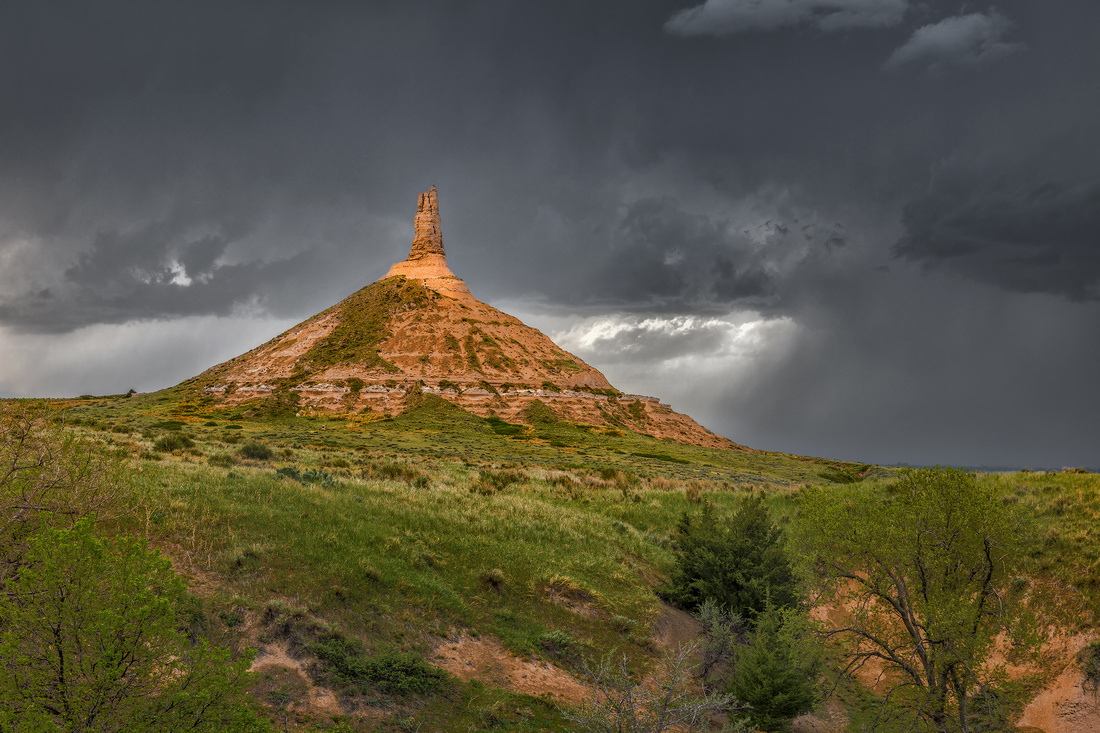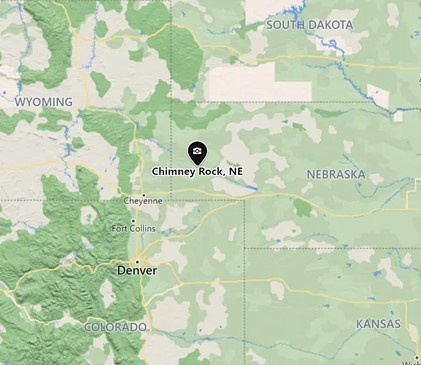Déjà vu


Where have I seen this landmark before?
There weren’t any supercells last May 21st. So our van of tornado chasers went looking for other, more sedate photographic opportunities. The closest attraction was Chimney Rock National Historic Site in western Nebraska.


Chimney Rock is a hoodoo, a 325-foot vertical pile of rock layers (or strata). Between 37 and 23 million years ago, volcanos covered the Great Plains with ash. The ash blended with sands, silts, and clays.
Over millions of years, the plains became elevated, and then erosion revealed Chimney Rock’s current shape. A hard sandstone cap at the summit shields the softer, more vulnerable layers below from erosion.
The Great Western Migration
During the 1800’s, Chimney Rock was the most noted landmark for an estimated 500,000 emigrants who risked their lives traveling along the Oregon, California and Mormon Trails. Historian Merrill Mattes found more references to Chimney Rock than to any other landmark in her examination of over 300 pioneer journals.
Reaching this “lighthouse on the prairie” was cause for celebration. It marked the end of the first (and easiest) third of their arduous journey.
Names Through the Years
The Lakota Sioux called it Elk Penis. The name apparently wasn’t popular with early explorers and settlers, who instead called it “Elk Peak,” “Elk Brick,” “Nose Mountain,” “Smokestack” and “The Chimney.” While written descriptions date back to 1830, the “Chimney Rock” name didn’t appear in print until 1842.
Flashback
Finally, it hit me: Chimney Rock graced one of the most popular video games of all time! The Oregon Trail was extremely successful, selling over 65 million copies in ten iterations over forty years. It was ubiquitous in elementary schools worldwide from the mid-1980s to mid-2000s, as school computers came bundled with the game.
The Oregon Trail was the go-to video game for our three children. Caroline, John, and Lisa all guided parties of settlers from Independence, Missouri, to Oregon's Willamette Valley on the Oregon Trail via a covered wagon in 1848.
The game was conceived by Minnesota history teacher Don Rawitsch and his roommates in 1971. But the earliest editions didn’t include any of the landmarks that settlers would have seen along the Oregon Trail.
In 1984, Philip Bouchard was tasked with upgrading the game for the Apple II computer. To improve the aesthetics, he threw in some real-life natural wonders. “Chimney Rock was one of the most famous of all, and therefore an obligatory inclusion,” Bouchard told the Scottsbluff Star Herald in 2019.


The game weaves math, planning, discovery, improvisation, and historical simulations into gameplay. You had to prepare for the journey, hunt along the way, and avoid serious illness and death to score points.
The Shot
I tried a few compositions and settled on this view. After a few images, I attached my Lightning Trigger to hopefully capture a lightning bolt for visual interest. But no bolts appeared in my field of view.
Thanks for looking,
Chuck Derus